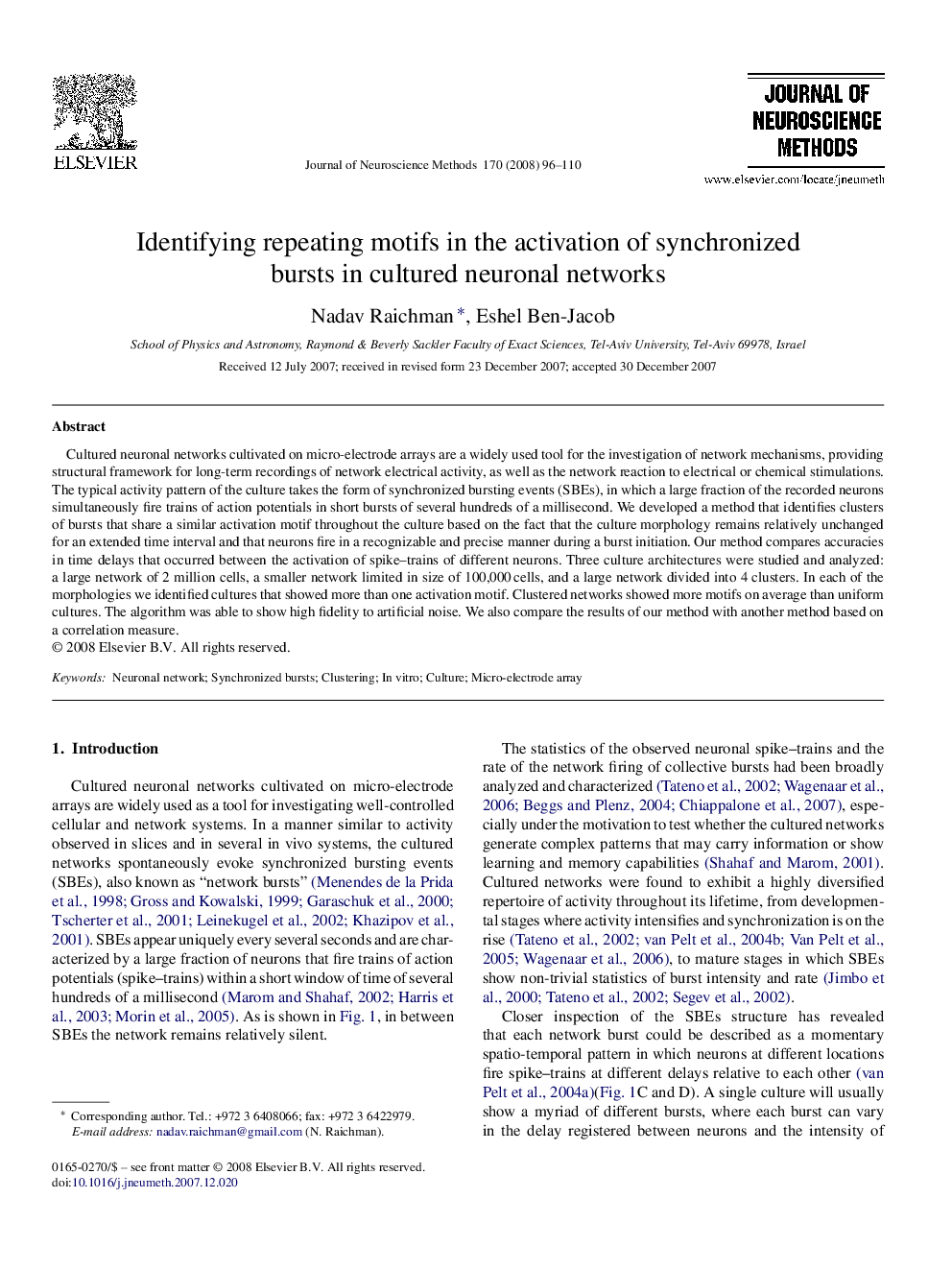| Article ID | Journal | Published Year | Pages | File Type |
|---|---|---|---|---|
| 4336374 | Journal of Neuroscience Methods | 2008 | 15 Pages |
Cultured neuronal networks cultivated on micro-electrode arrays are a widely used tool for the investigation of network mechanisms, providing structural framework for long-term recordings of network electrical activity, as well as the network reaction to electrical or chemical stimulations. The typical activity pattern of the culture takes the form of synchronized bursting events (SBEs), in which a large fraction of the recorded neurons simultaneously fire trains of action potentials in short bursts of several hundreds of a millisecond. We developed a method that identifies clusters of bursts that share a similar activation motif throughout the culture based on the fact that the culture morphology remains relatively unchanged for an extended time interval and that neurons fire in a recognizable and precise manner during a burst initiation. Our method compares accuracies in time delays that occurred between the activation of spike–trains of different neurons. Three culture architectures were studied and analyzed: a large network of 2 million cells, a smaller network limited in size of 100,000 cells, and a large network divided into 4 clusters. In each of the morphologies we identified cultures that showed more than one activation motif. Clustered networks showed more motifs on average than uniform cultures. The algorithm was able to show high fidelity to artificial noise. We also compare the results of our method with another method based on a correlation measure.
